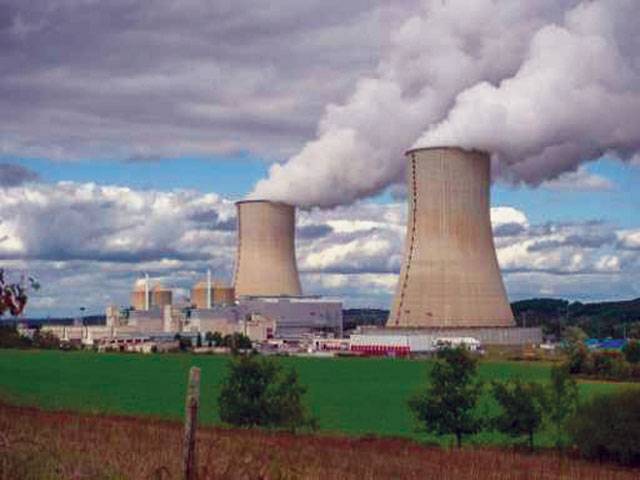BERLIN - Carbon-cutting pledges from 146 nations for a universal climate rescue pact leave the “door open” to capping global warming below the danger threshold, the United Nations said Friday, a month ahead of crunch talks in Paris.
But even if these 10-to-15 year plans are fulfilled, humanity will have used up three-quarters of its carbon “budget” by 2030 and must slash greenhouse gas output even more to avoid devastating climate impacts, the UN’s Climate Change Secretariat warned. “An unprecedented world-wide effort is under way to combat climate change, building confidence that nations can cost-effectively meet their stated objective of keeping a global temperature rise to under 2 C,” it said in an assessment of the country pledges.
“The national contributions are a game changer, and distance us from the worst,” said French Foreign Minister Laurent Fabius, who will host the year-end climate talks. At the same time, “much greater emissions reductions efforts will be required” to meet the two degrees Celsius (3.6 degrees Fahrenheit) target endorsed by the UN 195-nation climate body, it said. The longer we wait, the harder and more expensive it will become to cut back the fossil fuel emissions that drive climate change. The Secretariat’s 66-page review comes exactly one month before the November 30 to December 11 in the French capital tasked with finalising a historic global pact. As they stand, the pledges place the world on track for warming of some 2.7 C by 2100 - “by no means enough, but a lot lower than the estimated four, five or more degrees of warming” that would have otherwise take place, said UN climate chief Christiana Figueres.
If countries commit in Paris to periodically revising ambition upward, the goal stays within reach, she added. The so-called Intended Nationally Determined Contributions, or INDCs, will be a pillar of the Paris pact, which would be the first to bind all the world’s nations in a single action plan. The UN reviewed 146 INDCs submitted by October 1, including all developed nations and three-quarters of developing ones. Collectively, they cover 86 percent of the world’s greenhouse gas emissions. Many of the pledges from developing countries are contingent on receiving financial support for cutting emissions and adapting to climate impacts - drought, sea level rise, flooding - already in the pipeline.
Taken together, the carbon reduction schemes would cause average per capita emissions to decline by up to nine percent over the next 15 years. If commitments are met, combined annual emissions in 2025 will be about 55.2 billion tonnes of carbon dioxide equivalent (GtCO2e) - a measure used to group different greenhouse gases such as carbon dioxide, methane and nitrous oxide - compared to some 50 GtCO2e today.
By 2030, the figure will be 56.7 GtCO2e, showing that global emissions - while slowing - would still be on an upward trajectory. The UN Environment Programme has previously estimated that emissions must fall to about 32-44 GtCO2e by 2030 if we are to have a better-than-even chance at hitting the 2 C goal.
“As the report makes clear, to stay below 2 degrees - much less the 1.5 degrees that many countries are calling for - the Paris agreement must have meaningful provisions designed to quickly ramp up the level of ambition,” Alden Meyer, a climate analyst at the Union of Concerned Scientists, told AFP. To stay under the 2 C threshold scientists estimate that humanity has a total CO2 budget of about 1,000 gigatonnes.
Taking the INDCs into account, that allowance would be 54 percent spent by 2025, and 75 percent by 2030, the report said. Even if parties do not ramp up their pledges until as late as 2030, the possibility of a 2 C limit “still remains,” said the report. However, “this could be achieved only at substantially higher annual emission reduction rates and cost,” compared to action now.
Analysts have noted that many INDC pledges are probably conservative, leaving room for greater ambition. “It’s very likely that China, for example, can and will move faster than it has offered,” said Martin Kaiser, head of climate politics at Greenpeace. “It’s already rapidly getting out of coal and into renewables.” But the emissions gap is large, and the window of opportunity for action narrow. The pledges going into the Paris summit “only take us from a 4 C catastrophe to a 3 C disaster,” commented anti-poverty NGO Oxfam.
Friday, April 19, 2024
Climate pledges keep ‘door open’ to warming under 2C

3:56 PM | March 28, 2024
4:14 PM | March 23, 2024
President, PM condemn suicide blast, firing in Karachi
2:24 PM | April 19, 2024
Fly Jinnah launches another international route
2:23 PM | April 19, 2024
Interior minister directs foolproof security for Chinese nationals
2:20 PM | April 19, 2024
UNICEF to provide $20m for youth projects in Pakistan
2:04 PM | April 19, 2024
Maryam reviews progress on Nawaz Sharif IT City project in Lahore
2:04 PM | April 19, 2024
A Tense Neighbourhood
April 19, 2024
Dubai Underwater
April 19, 2024
X Debate Continues
April 19, 2024
Hepatitis Challenge
April 18, 2024
IMF Predictions
April 18, 2024
Kite tragedy
April 19, 2024
Discipline dilemma
April 19, 2024
Urgent plea
April 19, 2024
Justice denied
April 18, 2024
AI dilemmas unveiled
April 18, 2024
ePaper - Nawaiwaqt
Advertisement
Nawaiwaqt Group | Copyright © 2024





